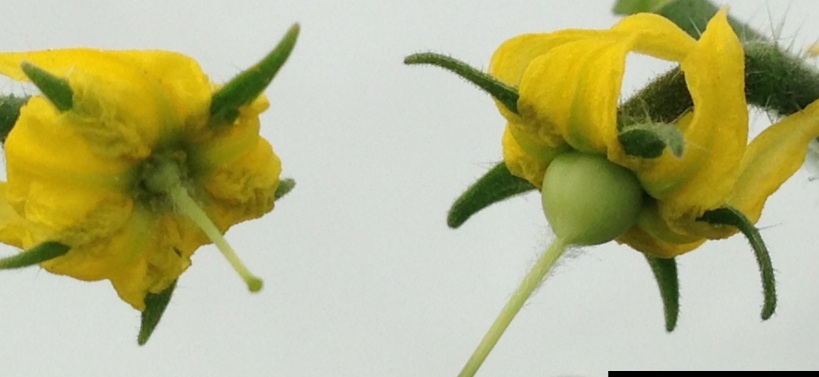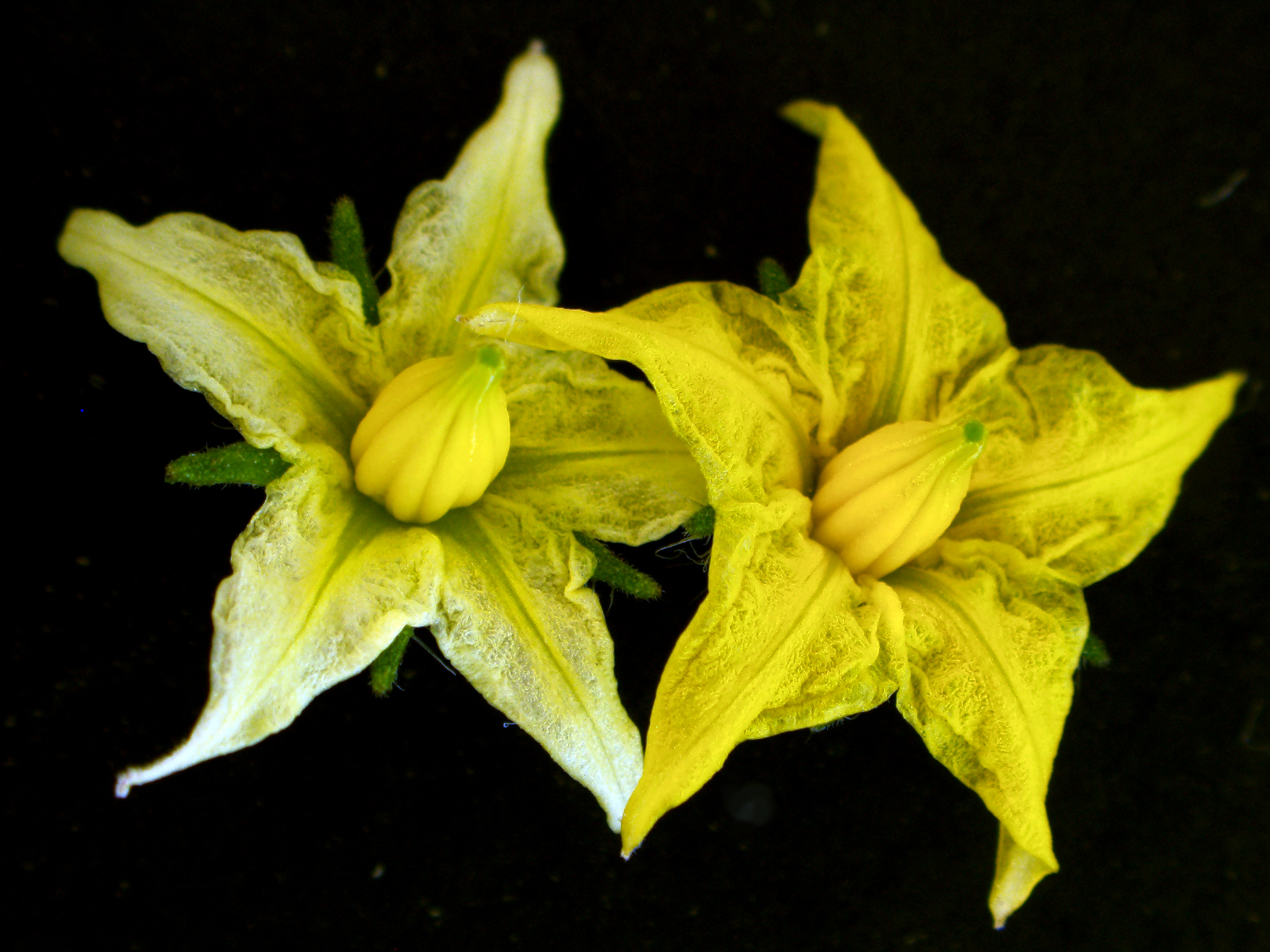TSUKUBA FUTURE
#045 In Search of a Gene for Easier Tomato Cultivation
Associate Professor ARIIZUMI Tohru, Faculty of Life and Environmental Science

The world produces more tomatoes than any other vegetable. In Japan, as well, the tomato occupies a position as one of the most highly produced and consumed vegetables. However, Japan's dwindling agricultural labor force and progressively aging population are forcing tomato cultivation, which requires an intensive amount of work, into a realm of high costs, due to the large amount of effort and expense required. As a result, the tomato has become a comparatively high-priced vegetable in Japan. Accordingly, research is now underway to create a new tomato cultivar that can be grown at low cost.
The tomato is loved throughout the world. The global average annual consumption of tomatoes stands at approximately 20 kg per person. In Japan as well, the tomato is one of the top-ranked vegetables in terms of production and consumption. However, the average Japanese annual consumption of tomatoes is only 8.7 kg per person, which is below the global average. Of course, this may be due to the culinary culture of Japan. While it is commonplace in Japan for tomatoes to be eaten raw, elsewhere around the globe they are more often used in cooking. In Japan, most of the tomatoes used for processing are imported, while most of the tomatoes intended for eating raw are domestically produced. The Japanese taste favors a comparatively sweeter tomato—they are even starting to be branded, and some individual high-grade tomatoes can fetch prices of 1,000 yen or more on the market. The amount of effort put into production is also a deciding factor in branding and high prices. The biggest bottleneck is in the work to get the tomato plants to bear fruit—individual flowers must be treated by spraying fruit-promoting agents (hormonal agents that cause a plant to fruit without pollination), or by using vibrating devices to pollinate the flowers. While there are methods that use bumblebees for pollination, they are expensive to purchase, and require management so that the bees do not escape their greenhouse. Tomato growing is proving to be a difficult problem as Japan's agricultural labor force dwindles and its population progressively ages.
Prof. Ariizumi's team (the Vegetables and Flowering Plants Research Group) is conducting research by inducing mutations in a large number of tomato plants, and then selectively choosing the most useful traits from among them. The tomatoes being used in this research are a special cultivar known as the "Micro-Tom." This is a dwarf cultivar that was originally created as a garden cultivar in the USA in 1989 for ornamental use. It is around 15 to 20 cm in height, and since it conveniently produces fruit in around 3 months after planting the seeds, it has become popular as a model cultivar for tomato research.The Gene Research Center of the University of Tsukuba maintains large-scale variant populations of Micro-Tom (more than ten thousand lines). While its fruit is not very suitable for eating, it can be cross-bred with other cultivars, so by using normal procedures for improving cultivars, useful mutations can be introduced into other cultivars.
Prof. Ariizumi and his team are placing particular effort on finding genetic mutations that will allow a plant to produce fruit without the necessary labor to encourage fruiting, and to study their mechanisms to create useful cultivars. As was described previously, one of the bottlenecks in growing tomatoes is that the work to get the plants to bear fruit can be quite painstaking. The research starts with selectively choosing promising variants from several thousand strains of tomatoes. Promising strains are picked out, with not even the slightest variation going unnoticed. The property of bearing fruit without pollination is known as parthenocarpy. Normally, the pollen clinging to the tip of the pistil makes its way inside the pistil via pollen tubes to achieve fertilization, and the ovary swells, growing into a fruit. However, in parthenocarpic variants, fruits will grow with neither pollination nor fertilization. While parthenocarpy can produce large fruits, the fruits themselves are seedless. In order for seeds to develop, pollination is required. But even parthenocarpic tomatoes can be pollinated to produce seed-bearing fruit.


Just because parthenocarpy is available doesn't mean that any variant will do. In order for a tomato to be commercially valuable, quality factors such as yield, the ability to stay fresh, and the caliber of the fruit must all be high. Prof. Ariizumi and his colleagues have already discovered several lines that have high commercial value and stable development. As long as parthenocarpy is available, cross-breeding those lines with established useful cultivars puts the development of the "tomato cultivar of the future" with a high market value firmly in reach. To achieve that, a clear understanding of the causative genes and the genetic mechanism by which parthenocarpy occurs is indispensable. If the mechanism is understood, it becomes possible to apply it to vegetables and fruit trees other than tomatoes as well. In addition to the many interesting genetic mechanisms that Prof. Ariizumi and his colleagues have discovered, they are also making progress on research into melons. Furthermore, in the course of their research of tomato mutant lines that contain high amounts of healthy carotenoids, they also found genes that are associated not with the fruit, but with the color of the plant's flowers. That discovery is developing into joint research with the NARO Institute of Floricultural Science of the Ministry of Agriculture, Forestry and Fisheries.
Prof. Ariizumi researched rice plants during his time in graduate school at Tohoku University. While a postdoc at Washington State University, he used a model Arabidopsis thaliana plant to conduct fundamental research. His appointment to his post at the University of Tsukuba came at just the right time, as his research interests were once again turning towards useful plants. However, things didn't get off to a perfectly smooth start?his research did not begin to truly blossom until he had accumulated around five years of steady accomplishments. Today, he is reaping the daily satisfaction and rewards of research that is directly connected with practical application of fundamental research to uncover the genetic mechanisms of profoundly interesting phenomena.
Article by Science Communicator at the Office of Public Relations


